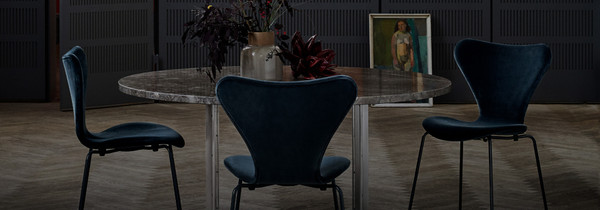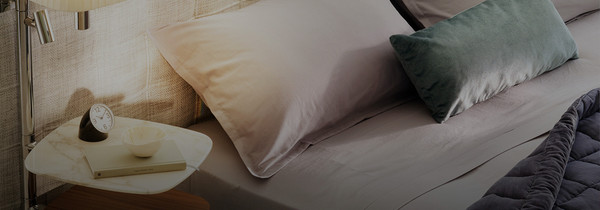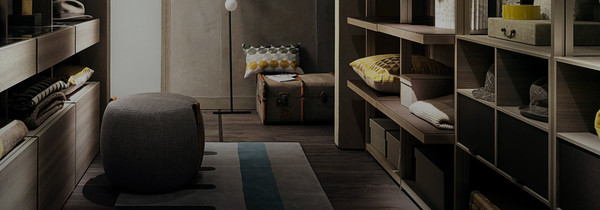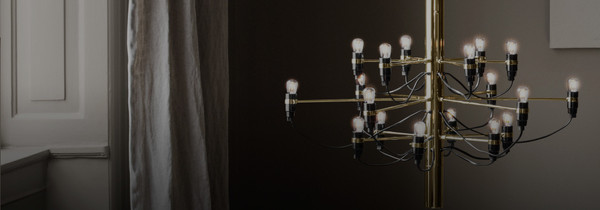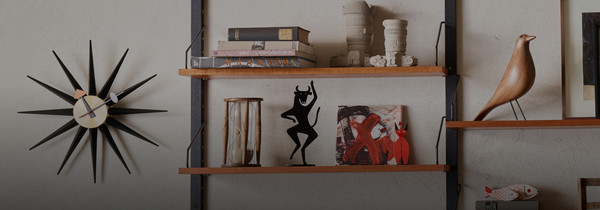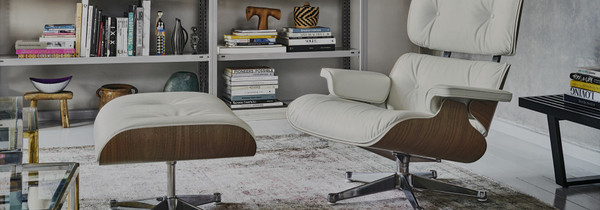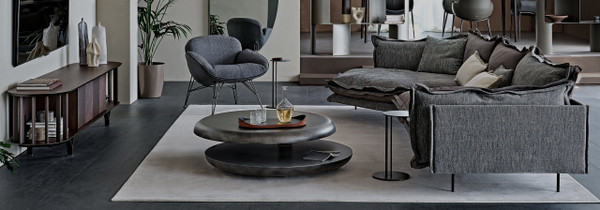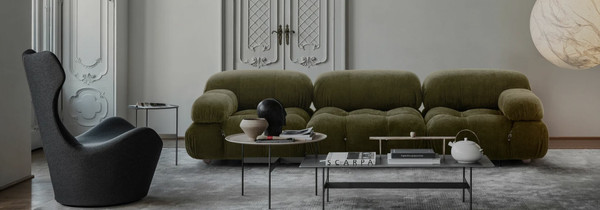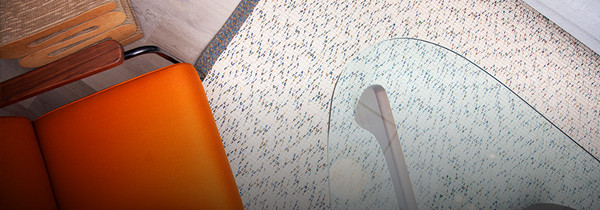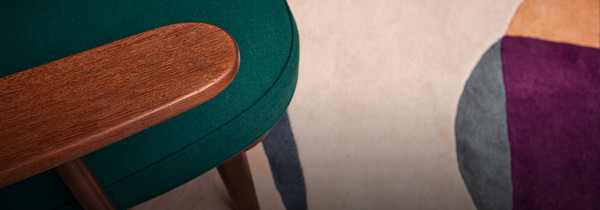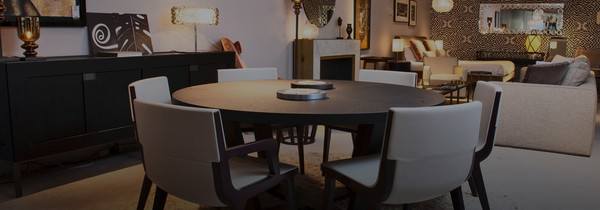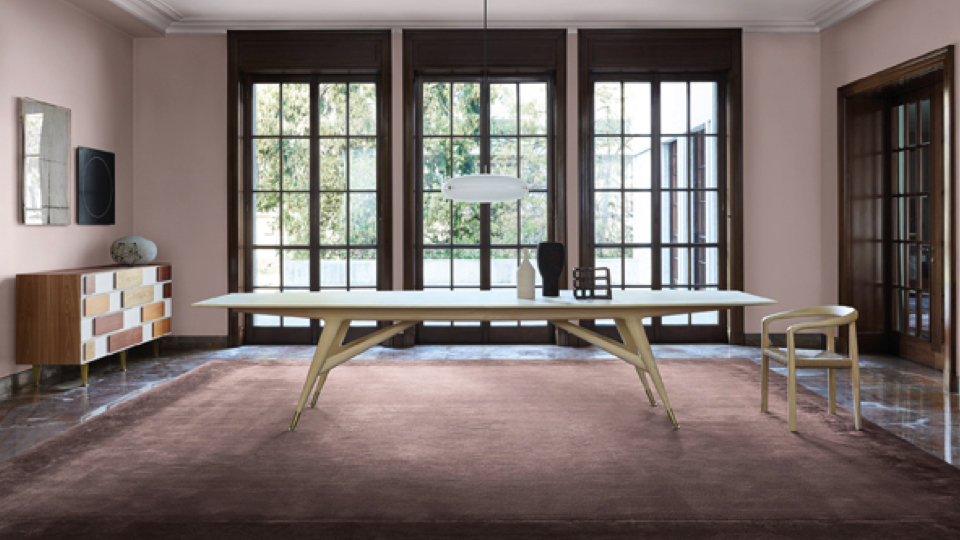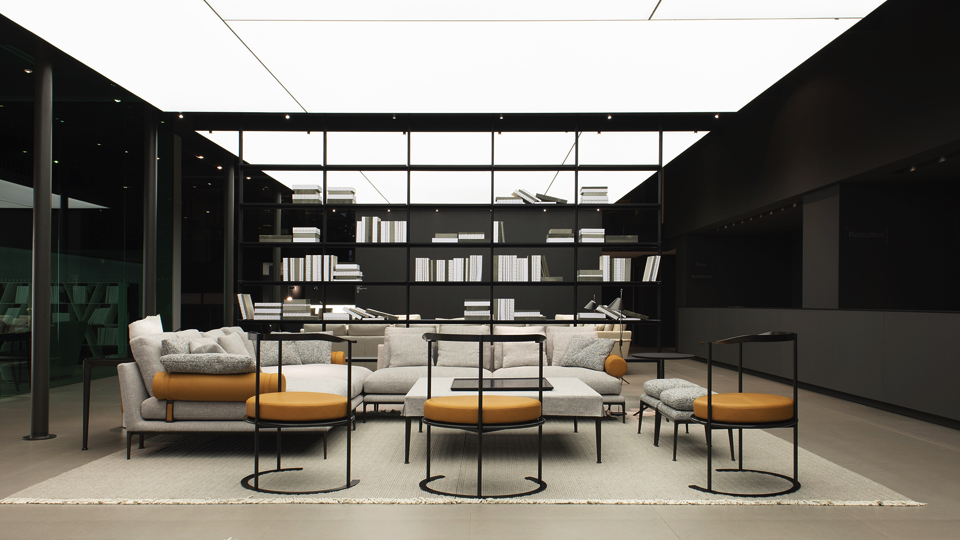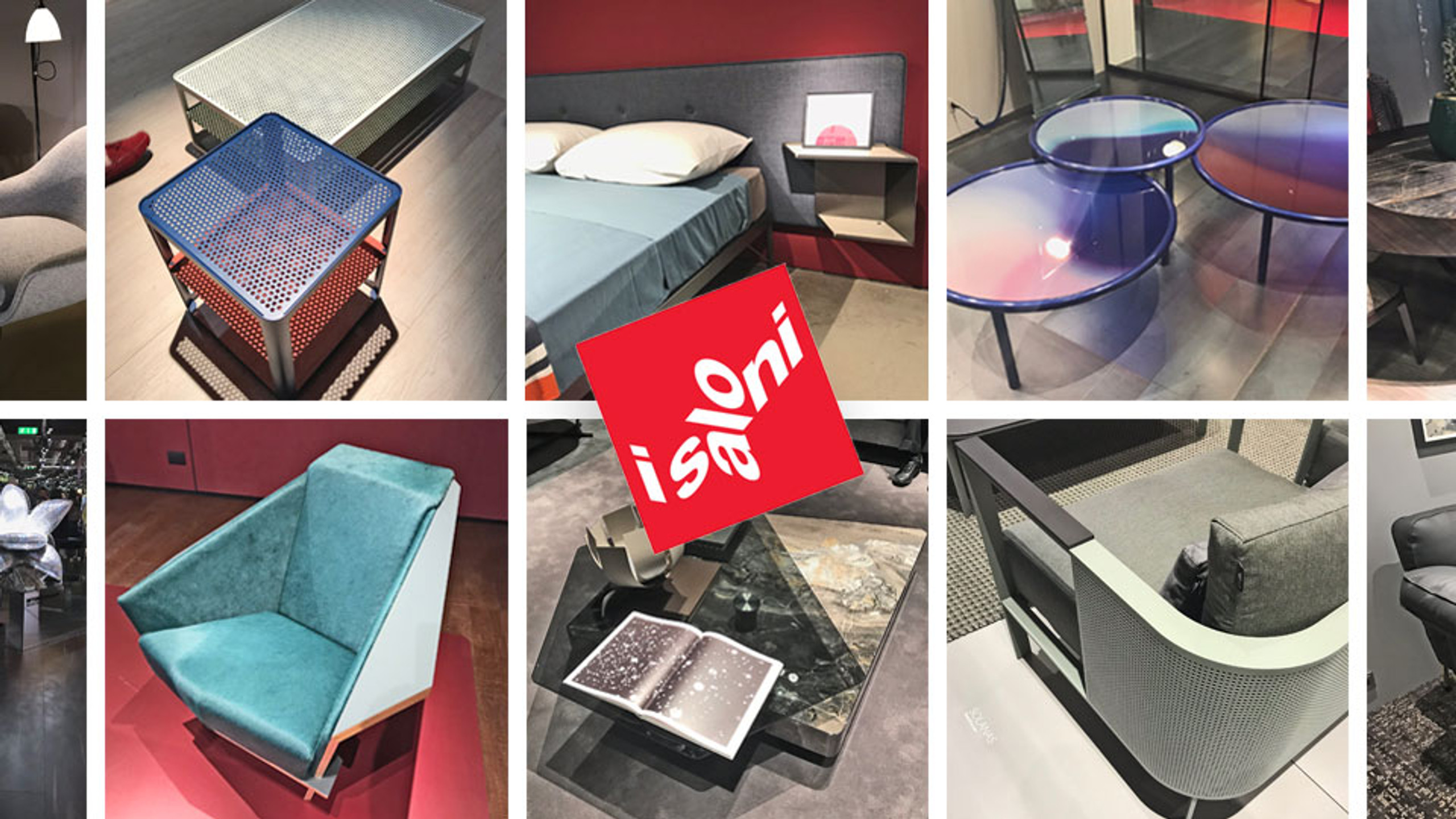
Milan Design Week – Trend Report 2018
Milan is a city obsessed with style. From the ubiquitous Gucci wall murals to the gold tinted halls of the Palazzo Serbelloni, it represents the past, present and future of contemporary design.
Come April, its cobbled streets are transformed into bustling catwalks as 300,000 stylish visitors descend on the city, each determined to take part in the world’s most important design week.
This year, we went backstage with the exhibitors, from the fringe events in Milan’s secluded gardens to the bustling heart of the fair itself. Spurred on by copious espressos and no shortage of canapés, we travelled all over the city to bring you our Milan Design Week Trend Report 2018.
Looking Sharp
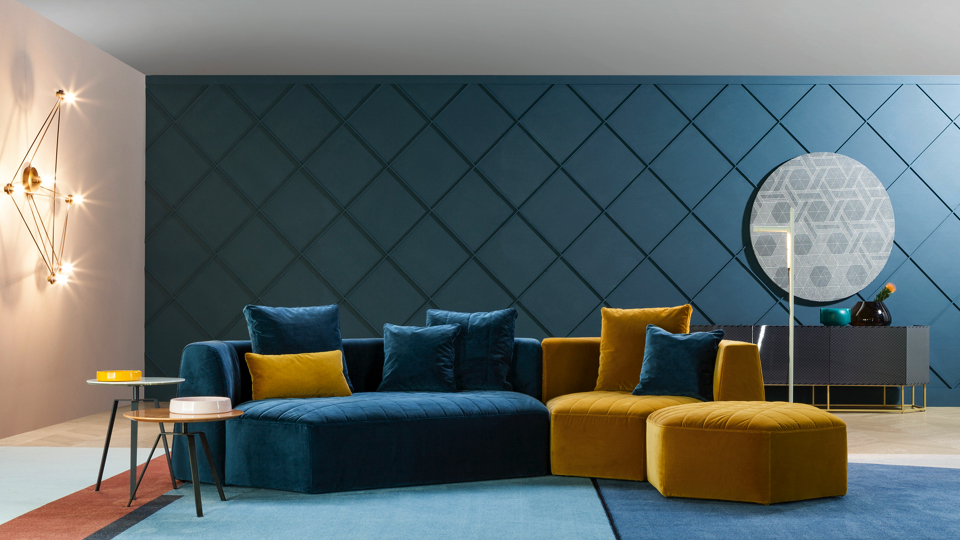
Walking through the hundreds of stands, it was clear that last year’s rounded silhouettes had had their edges sharpened somewhat. Circular sofas had given way to hexagonal styles, offering a play of edges and rounding in the same design. The Panorama Sofa by Bonaldo was a clear example of this, offering generous proportions, only this time a little more aesthetically sharp.
Patricia Urquiola was one step ahead of the curve as ever, celebrating her 20th anniversary with Moroso with the introduction of the Chamfer Sofa. Existing halfway between Moroso’s Rodonda and M.a.s.s.a.s sofas, it offers a unique diagonal backrest that opens up the room, while connecting its occupants in a wide architectural embrace.
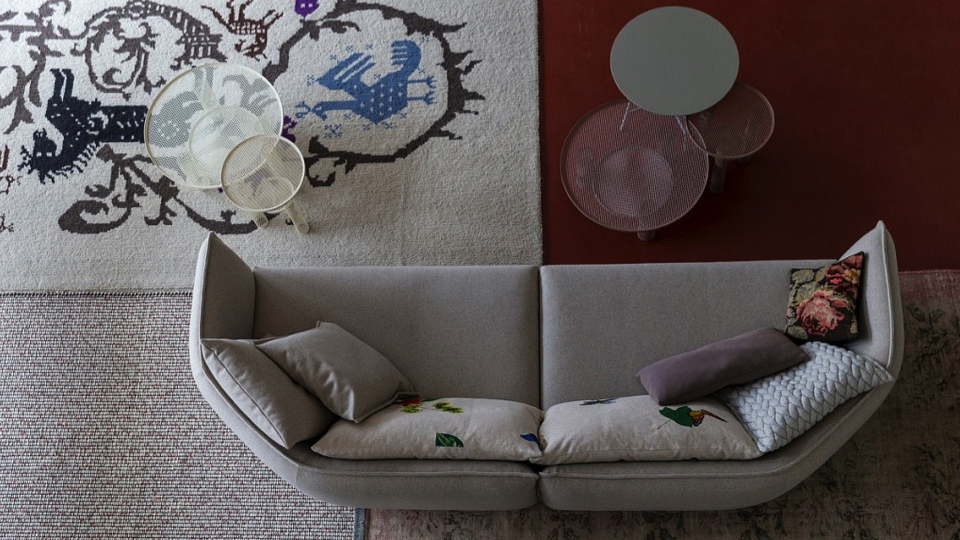
It’s widely accepted that the design world is driven by reactions and counter-reactions. The inclusion of more clean-cut lines at this year’s Salone was an indication that our living spaces will once again welcome more geometric and linear shapes. It’s a natural progression given the overwhelming influence of Hygge, and we predict that brands will tiptoe slowly towards this new aesthetic. Poltrona Frau’s Othello Table paid tribute to this idea, reinterpreting the conventional round dining table into a sixteen-sided marble masterpiece.
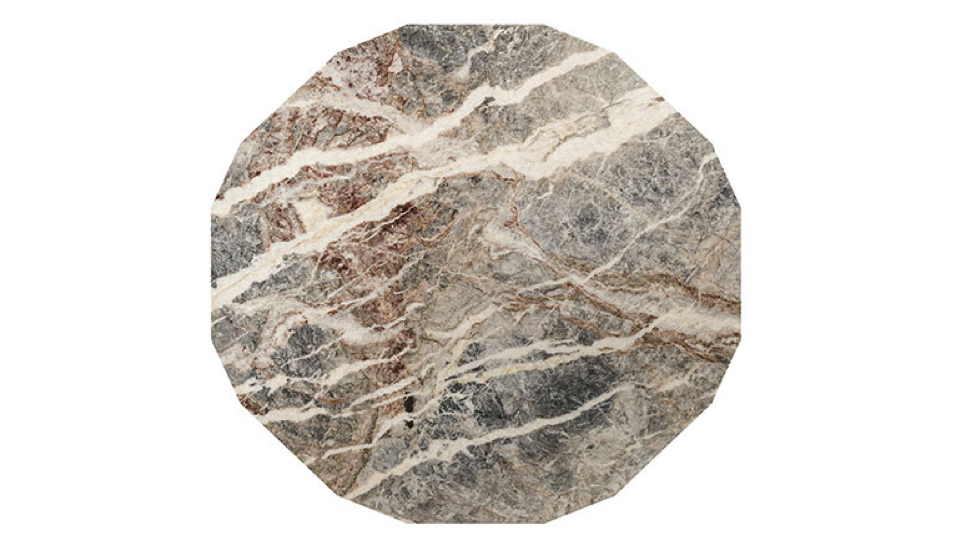
So too did B&B Italia. Their re-editioned Alanda Coffee Table harnessed unusual rhombuses and triangles for its base, playing with depth and dimension to create an optically intriguing modern coffee table.
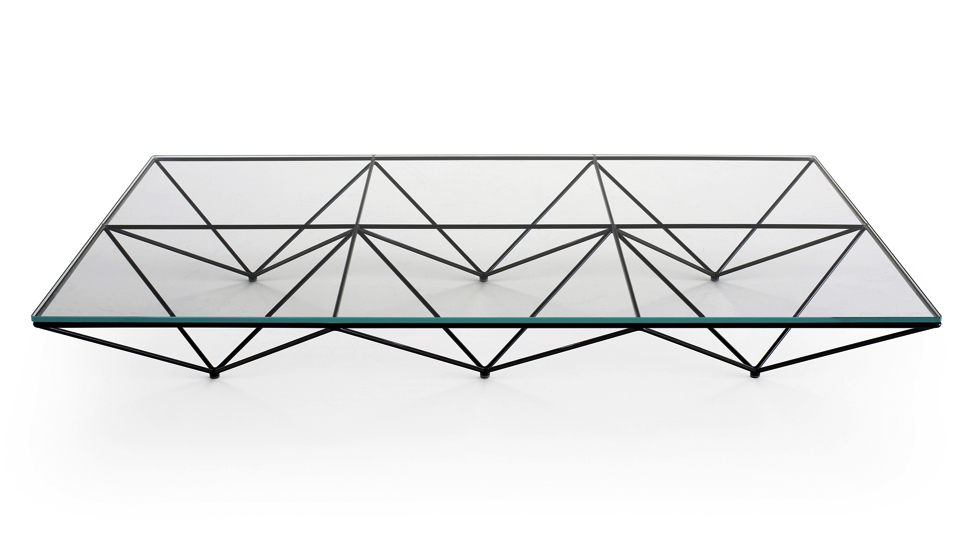
The effect of this styling on armchairs and dining chairs was equally intriguing. Cassina’s limited edition Taliesin Armchair wowed audiences in their Milan showroom. Fabricated from a single piece of plywood, Frank Lloyd Wright’s stunning re-edition was an architectural vision, its smooth vectors and perfect angles appearing capable of flight. Described as “origami in wood”, Taliesin is both a chair and a striking piece of contemporary art for the modern home.
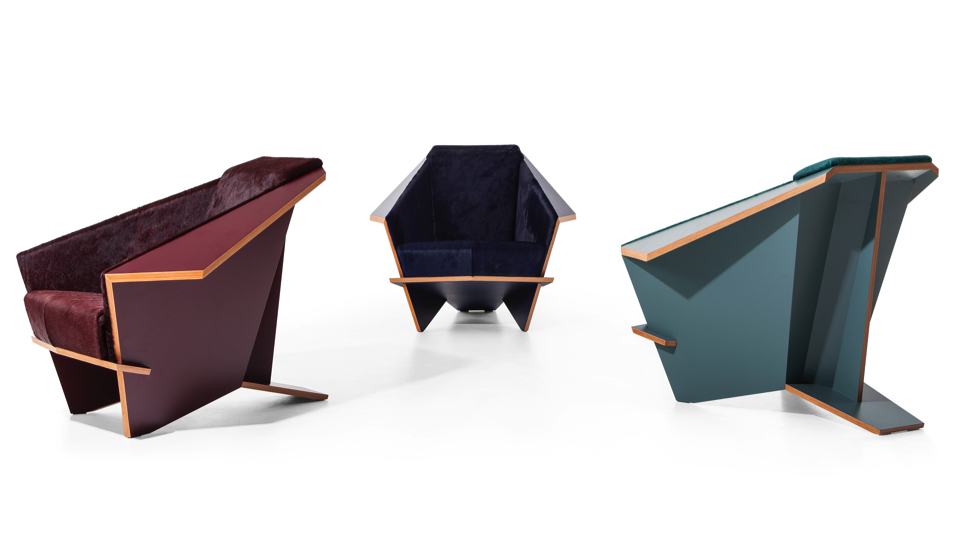
Orange is the New Black
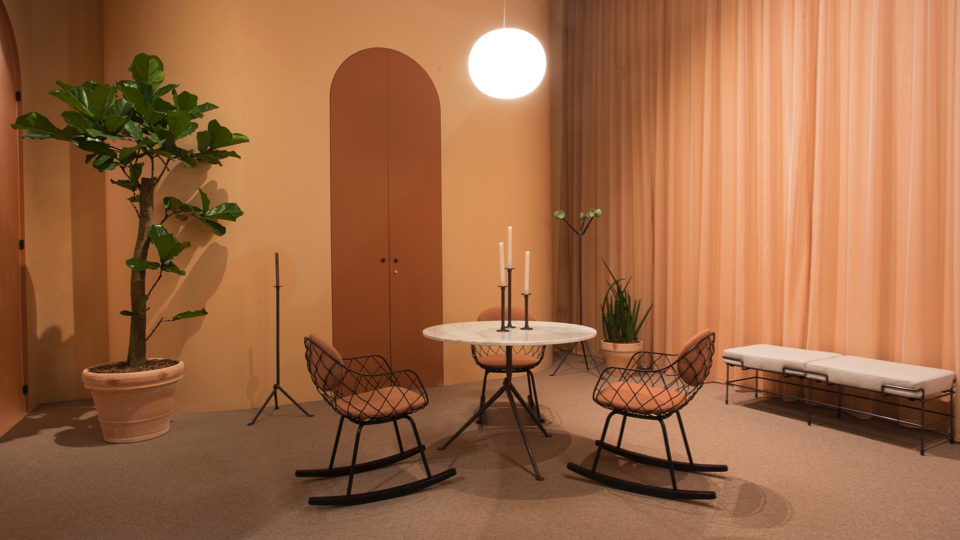
Colour is a key feature of any design week and Milan Design Week 2018 did not disappoint. Brands seemed to have been divided into two camps, opting for sunset hues that bled into a range of earth, terracotta and rust or lush greens layered together.
Vitra’s Orange Room proved to be one of the most Instagrammable spots at the fair. A mix of mango and papaya provided the perfect colourscape for some of their more minimal offerings on display, with new additions to the Maarten Van Severen collection.
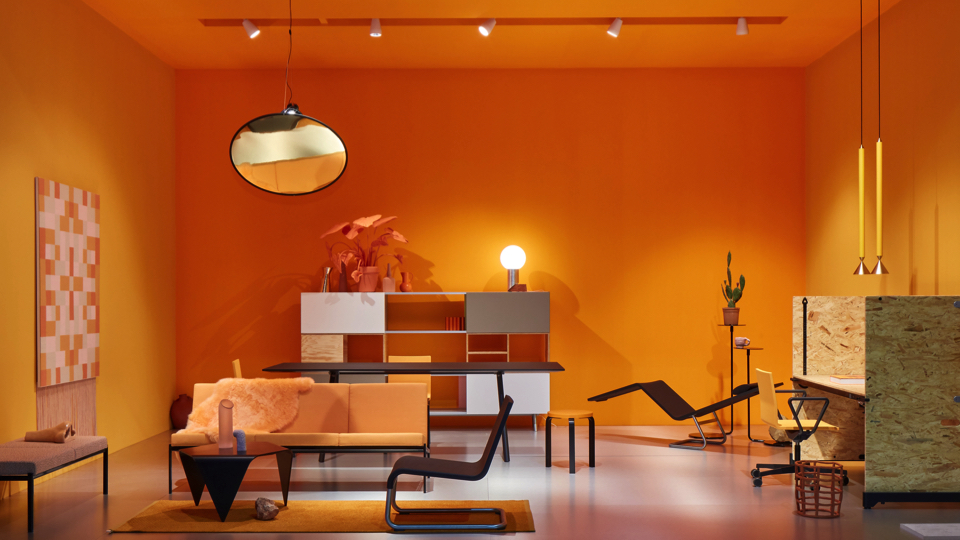
Green was another firm favourite, best exemplified in the multitude of outdoor settings. Tone on tone sage with perforated detailing conveyed a military feel to Gandia Blasco’s new Solonas collection, while iridescent greens lead the fore at Paola Lenti.
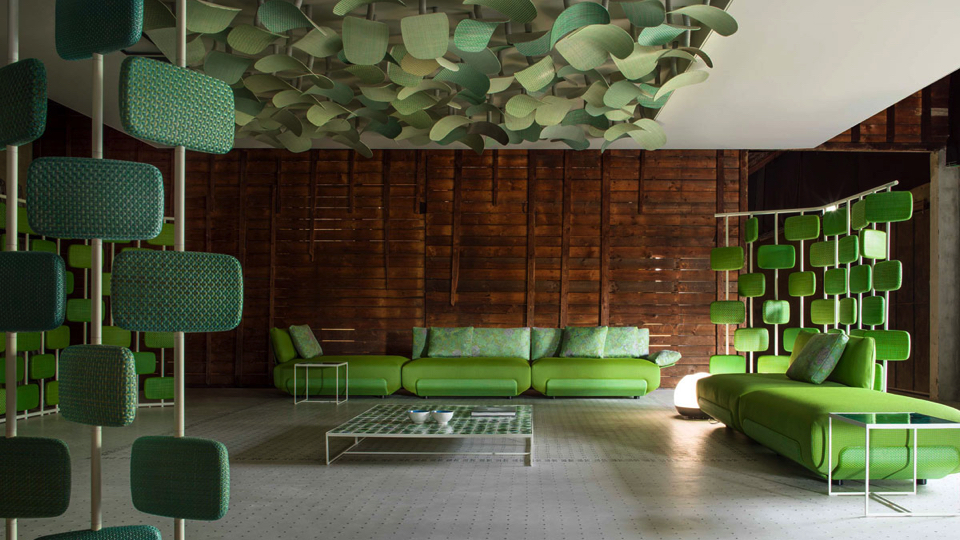
Situated in the gorgeous Prada Foundation building, there was a palpable sense that we were walking through history. More art gallery than trade fair, colourful ceiling installations and rope curtains revealed Paola Lenti’s obsession with woven textures. The tactile exhibition called on all of the senses, in a life-sized exploration of yarn, colour and comfort.

After peering into each of the carefully curated settings, we were led out onto perfectly shaded gardens, an Eden of tranquillity that showcased some of the items in their natural environment.
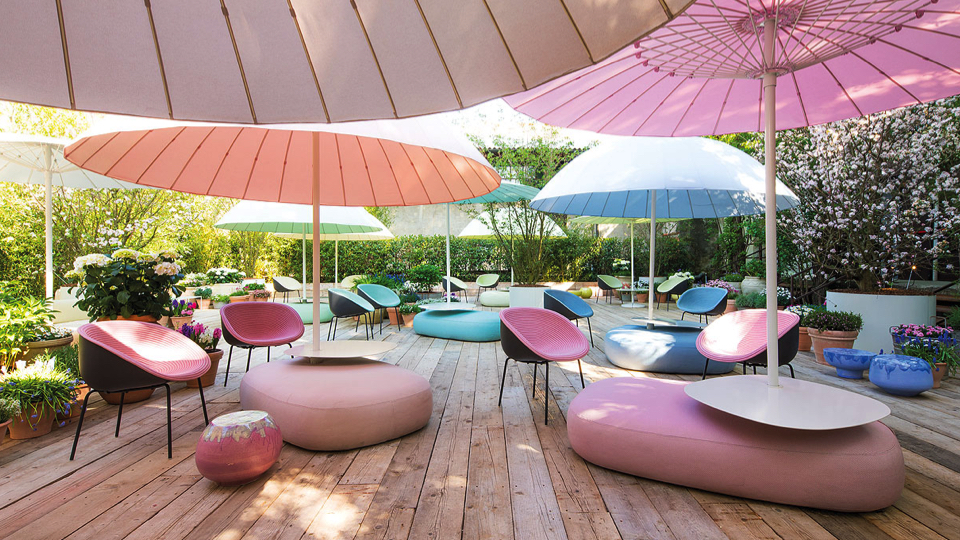
Brightly saturated hues were also on display at Zanotta, with their bestselling William sofa upholstered in a striking emerald green. We were thrilled to see them brushing the dust off several of their long-forgotten designs with Achille Castiglioni‘s Albero Plant Holder back to help organise our greenery.
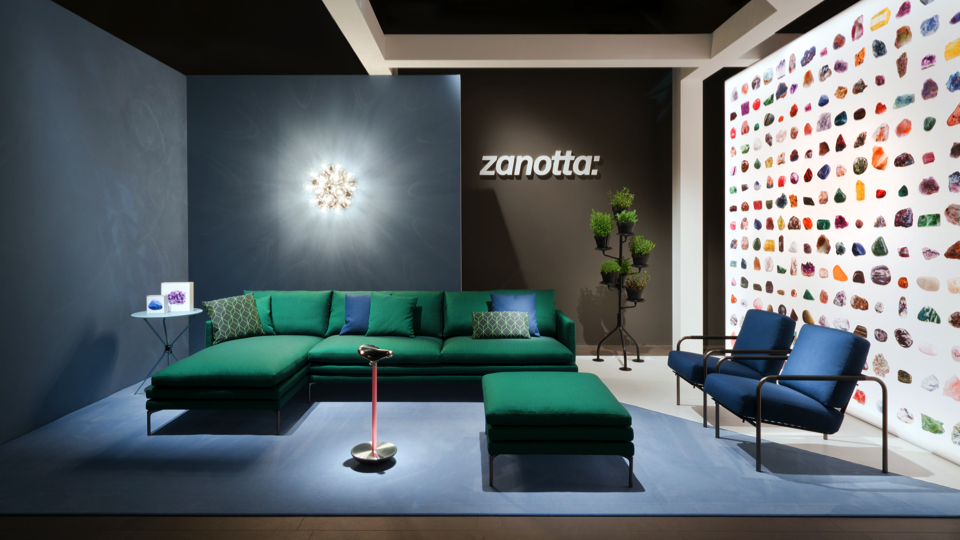
Perfectly Imperfect
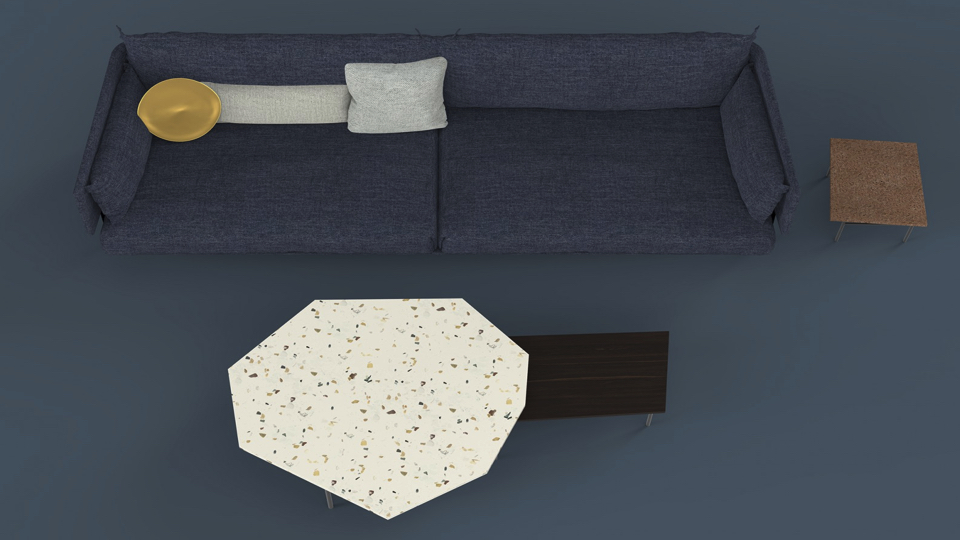
New profiles were also found in the form of fragmented side tables and asymmetric mirrors. This micro-trend offers a play on imperfection, using cut-out shapes to reveal an edgier take on designer furniture.
Arketipo’s Final Cut Coffee Table featured a jagged piece of smoked glass overlapping an irregular cut marble slab. It seemed to be an unusual instance of art echoing life; a hewn rock table revelling in its raw intricacies. Together, their sophisticated geometries created an interesting dialogue between the meticulous design process and its organic materials.
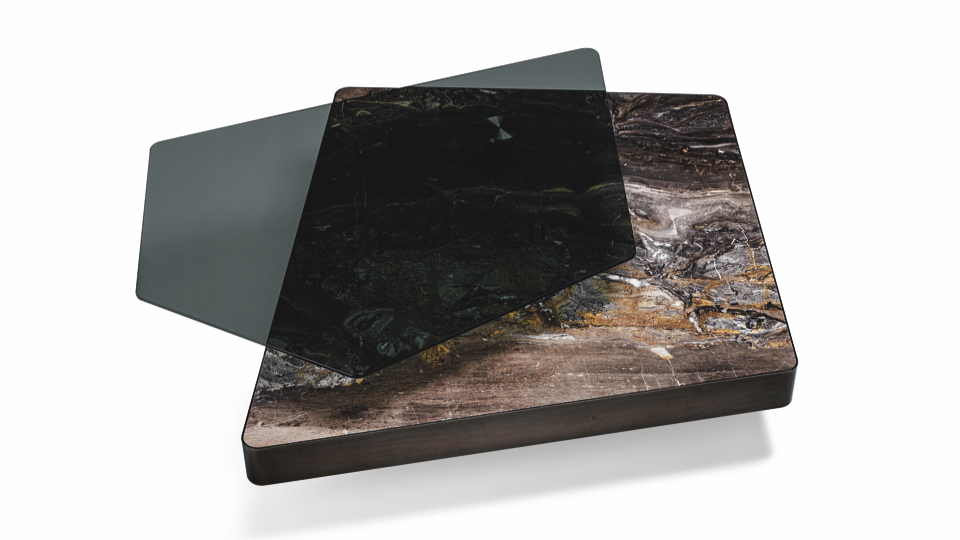
This design ethos was complemented in many instances by the use of terrazzo, itself a fragmented, composite material. Bonaldo’s Fragment and Cappellini’s Radical Fake Desk were clear standouts in this regard, channelling the elegance of marble and quartz in a more playful, spontaneous fashion.
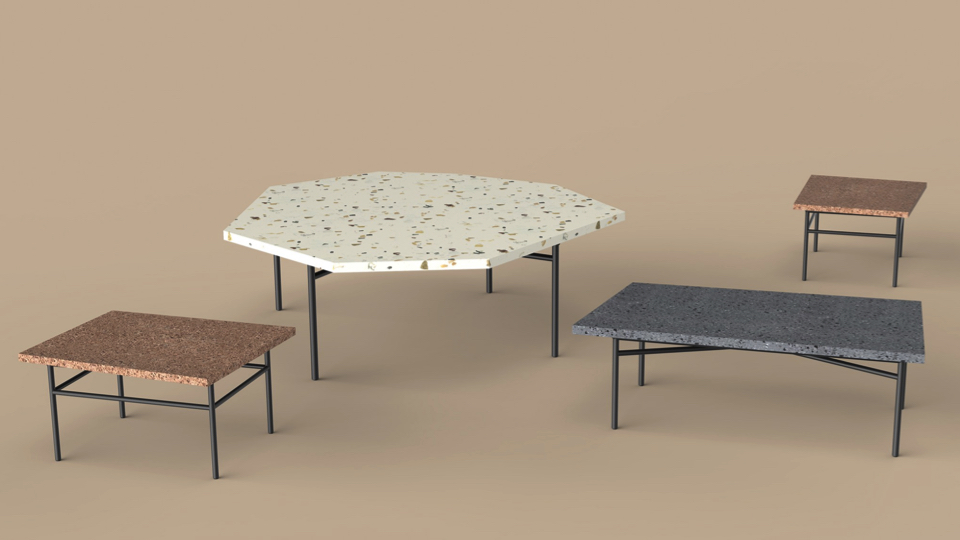
A desire for rugged over perfectly polished design was evident in the raw edges on display at EDRA. Jacobo Foggini returned to the fair to present the new Aegean table, a stylish modern dining table with a faceted perimeter and wickedly pointed legs.
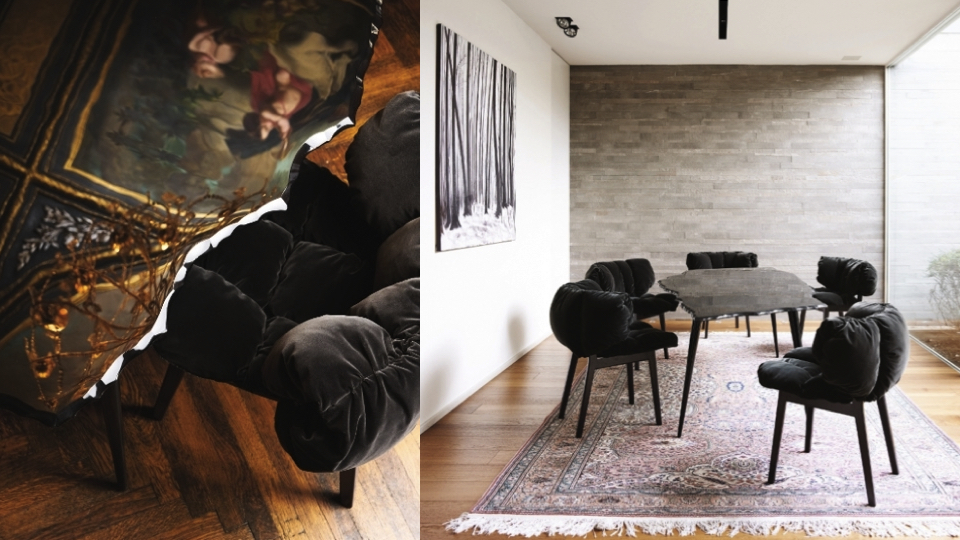
Natural edges were also used on the Cyclades Low Table, conforming to Foggini’s agenda of letting materials speak for themselves.
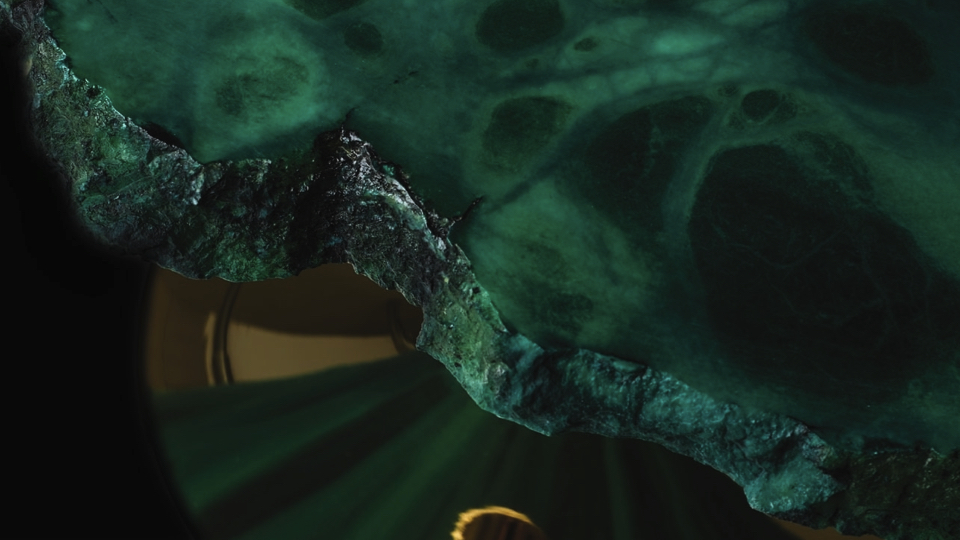
The World Through Rose Tinted Glasses
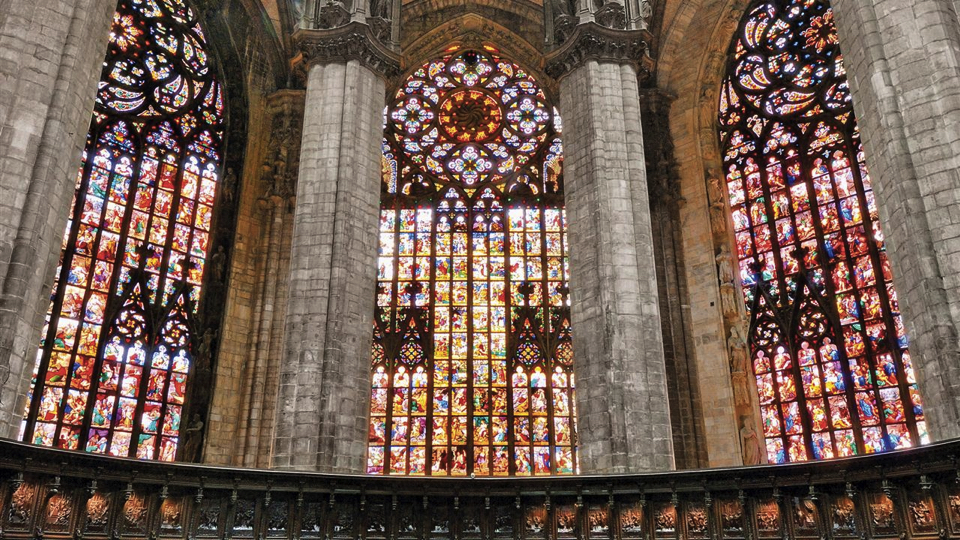
Italy has a vibrant and longstanding glassmaking tradition, with Milan’s Duomo Cathedral home to some of the most spectacular stained glass windows in the world. However, they weren’t the only coloured glass to catch our eye at this year’s Salone del Milano. Tinted glass was found adorning furniture in stands as far ranging as Porada, Glas Italia and Magis.
Reminiscent of the psychedelic hues of the swinging 60s, it imbued room dividers and sideboards with a soft, retro feeling, establishing a dialogue between glass and the colours of light. Standouts included the L.A Sunset Coffee Table by Patricia Urquiola and the Big Wave Table by FIAM, both wonderfully luminous designs that would add colour and life to any living room.

Tinted mirrors in this style were also particularly prevalent. The colourful glass provided a beautiful filter, far more subtle and nuanced than its digital equivalents. We watched as visitors to Glas Italia’s stand were compelled to stop and take a snap in front of the Bouroullec brothers’ Rayures Divider.
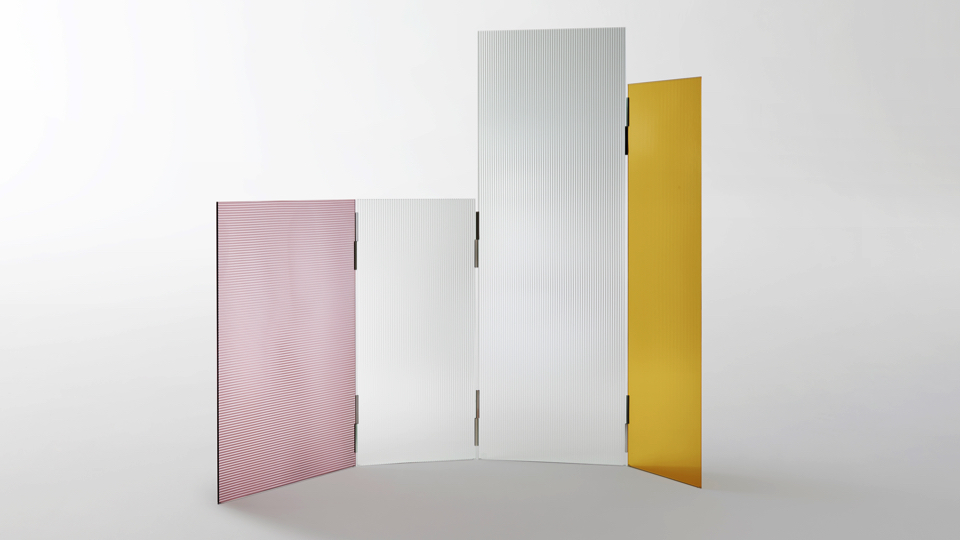
It was a similar story at Sovet, where their artful new hexagonal mirrors stole the show. Boasting a range of luminous finishes from rose gold through to soft bronze, it’s a trend that would look particularly gorgeous in light-filled residences.
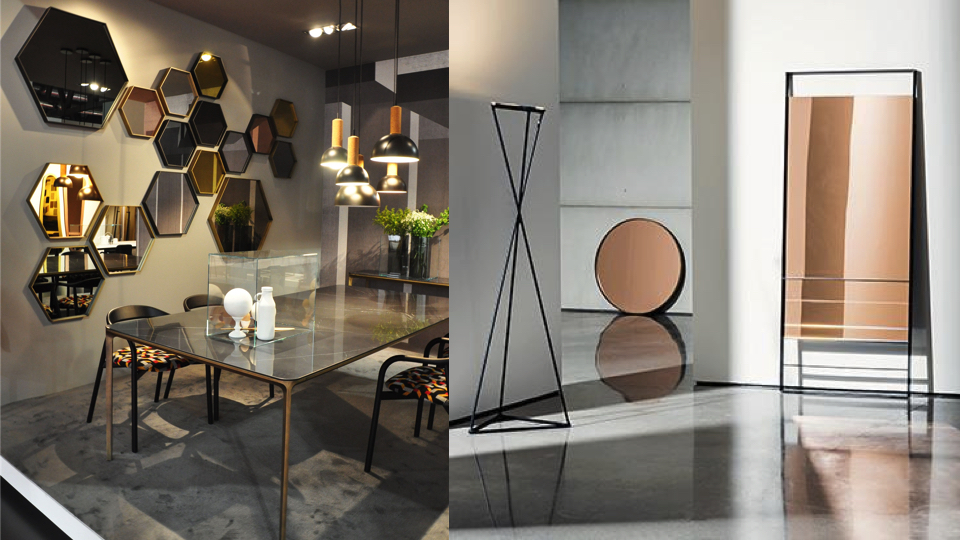
Retromania
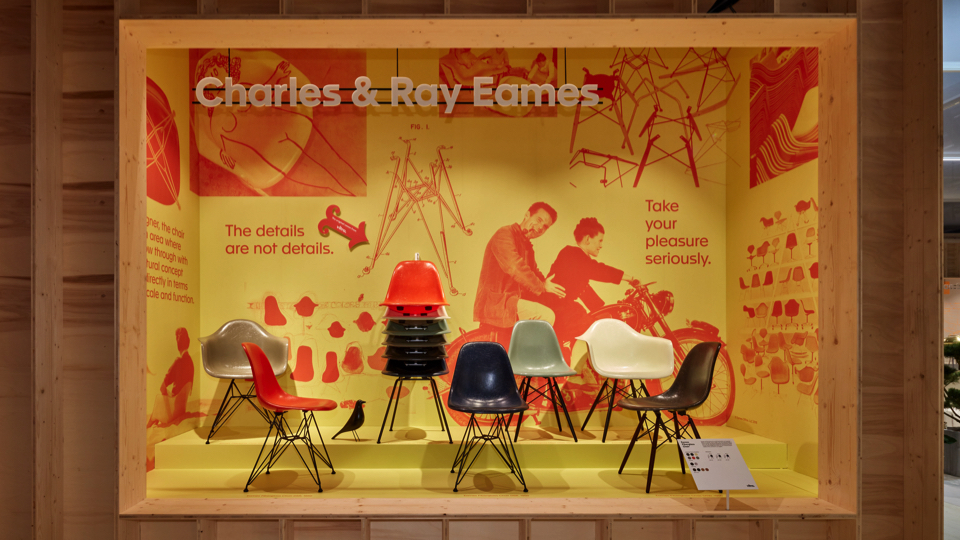
Design is a cyclical process and this year its pendulum swung back to the 1950s and 70s. An epoch characterised by optimism and colour, many of its classic designs needed only a few light touch-ups to be ready for a 21st century audience.
Vitra’s Charles & Ray Eames Exhibition revealed the much-loved Fiberglass Chair. The chair was initially issued in the mid-fifties and represented the first foray into fibreglass as a residential material. The Eames’ were enamoured by its extraordinary resistance and texture and set to work immediately to create this now iconic chair. Production was phased out in the 1990s, due to technological complications and an inability to keep up with other more ecological materials. Today, innovative production systems mean these issues have been resolved, and the Fiberglass Chair is now available once more in an array of old-school hues.
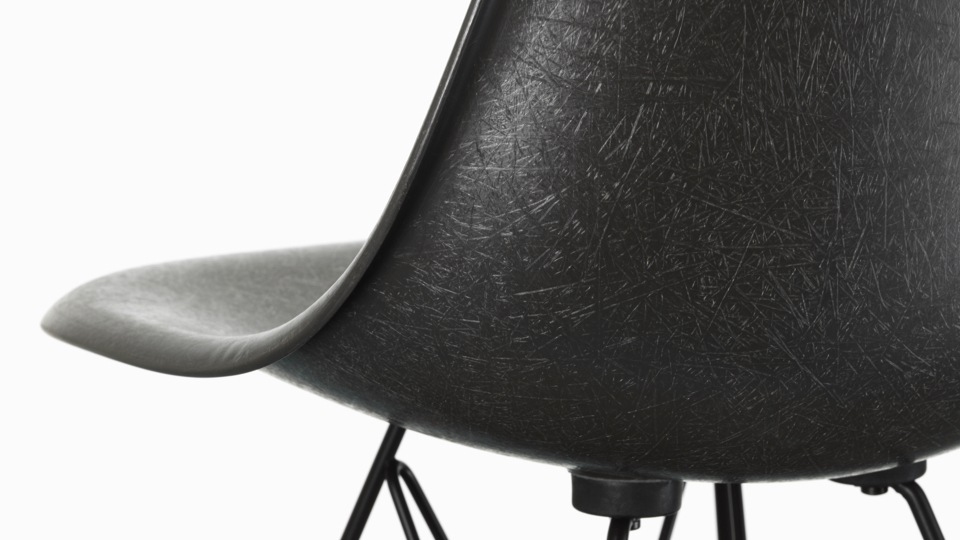
Two other welcome re-editions emerged in the form of De Sede’s DS-600 Sofa and the new and improved Maralunga Sofa. The DS-600, fondly remembered as the world’s longest sofa, snaked sinuously throughout the stand, now available as a stylish pink or green outdoor version.

Meanwhile, Cassina’s bestselling Maralunga has been revamped for its 40th anniversary, gifting more width and depth to the discerning customer.
Gio Ponti was remembered in the form of the D.859.1 table at Molteni & C. His flared dining table was initially designed for the dizzying heights of the Time & Life Building in New York, home to the crème de la crème of American publishing in the 1960s. Today, it’s available in its original dimensions with a wider selection of finishes.
There was also something distinctly retro about Gubi‘s new Bat Lounge Chair. It forms the second collaboration between the brand and award-winning design duo, GamFratesi.
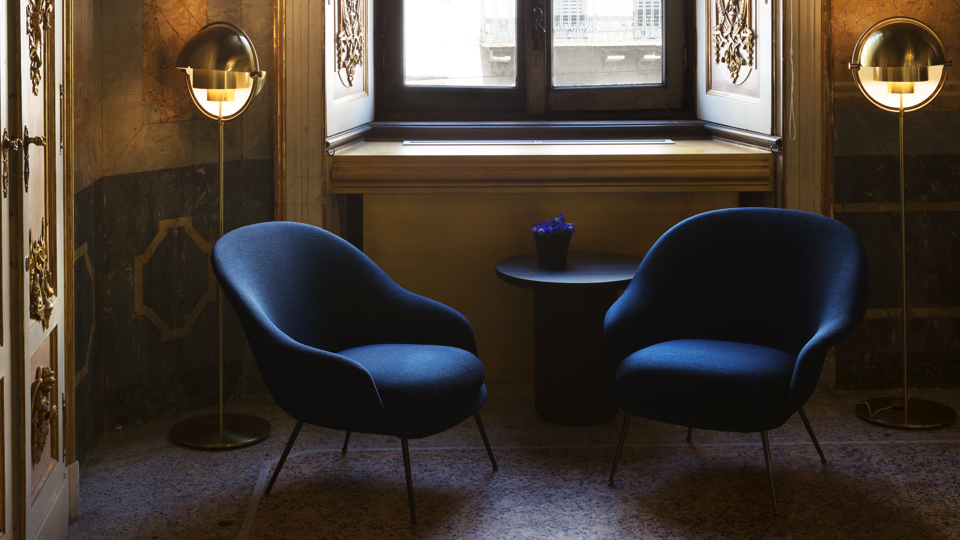
Much like the Beetle, the Bat draws on the biomorphic features of its namesake, its curiously winged armrests and high back a source of comfort in both residential and commercial spaces. Presented amid the stunning backdrop of the Palazzo Serbelloni, it formed the centrepiece of their new collection replete with hotly anticipated re-editions of the C and Pacha Chairs.
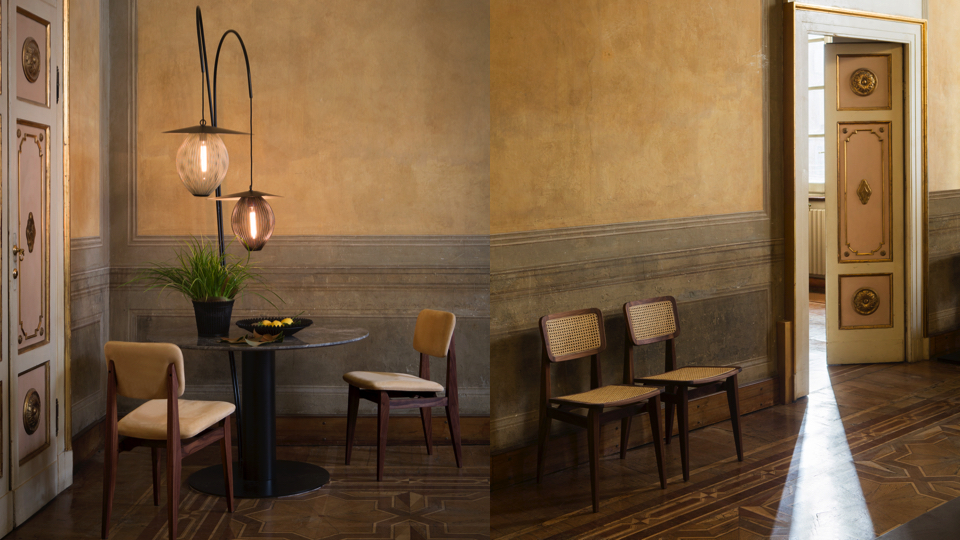
Last but not least, Porada celebrated their 70th anniversary with a throwback collection of modern side tables and accessories inspired by several historical pieces from the 1970s. The triangular Tony and round Trittico side tables feature coloured glass tops that contrast gorgeously with their new ashwood finish. The inclusion of an all-new essence represents quite a departure from their trademark Canaletta walnut but is further evidence of how even the biggest brands seek to adapt and reinvent themselves.
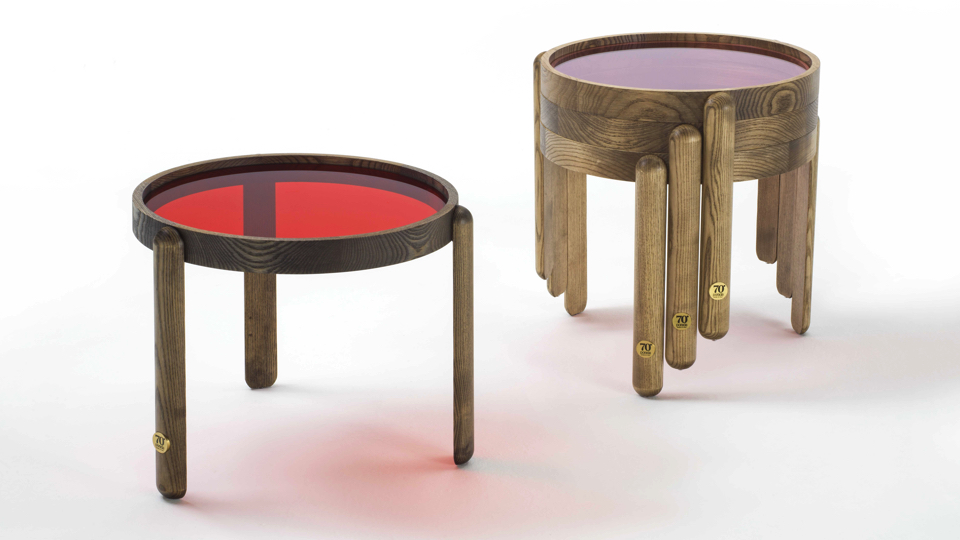
Inside Out
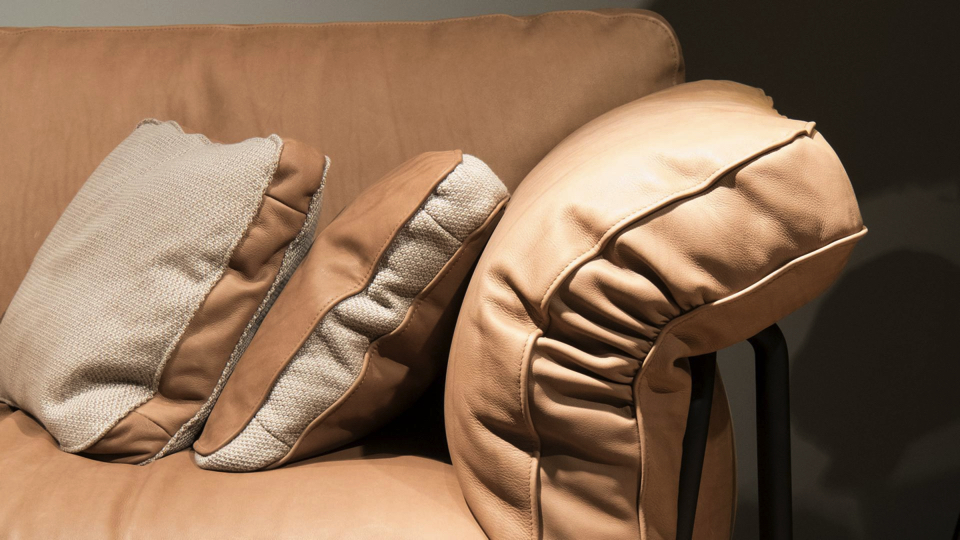
Elsewhere in the fair, there was distinct evidence of a Bauhaus revival with the likes of Gallotti & Radice and De Sede producing a striking series of tubular steel sofas and armchairs.
The Sophie Armchair by Gallotti & Radice harnesses Le Corbusier’s famous technique of structure as decoration. Its snug luxurious cushions are encased by an artful gold frame that lends shape and substance to this glamorous Italian armchair. It is by no means essentialism as Le Corbusier first imagined it and yet this doesn’t seem to matter. Sophie is modern and indulgent, speaking to the 21st desires for colour, comfort and tactility while offering a graceful nod to the past.

De Sede’s DS-610, however, is a little bit more up Corbusier’s street. Its dignified tubular frame is inspired by ship railing and lends a maritime flair to the piece. Meanwhile, generous cushions upholstered in soft Nubuck leather create a relaxed, inviting atmosphere that juxtaposes wonderfully with the commanding frame.
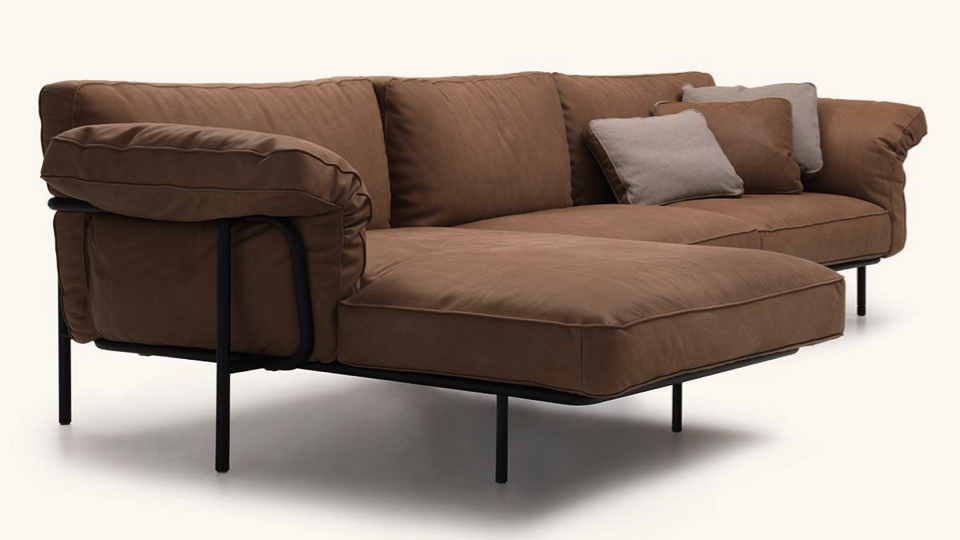
Mix It Up
A desire for contrast at this years’ Salone del Milano revealed the increasing use of mixed materials. Taboos were broken at B&B Italia with the launch of the new Atoll Sofa, styled in their showroom in a luxurious fabric upholstery with contrasting leather bolster cushions. Providing both an accent detail and stylish extra support, the tan leather provided a sharp and refreshing uplift to the fabric sofa, establishing new synergies between these usually antagonistic elements.
Mixed finishes and textures were also a part of the agenda at Cattelan Italia, where quilted leather, wood and ceramic existed side by side. Taken together, this trend conferred a whisper of muted maximalism, juxtaposing unusual combinations to establish a new design language. Our top picks? The new Aston sideboard and Round Ker-wood Skorpio Table.
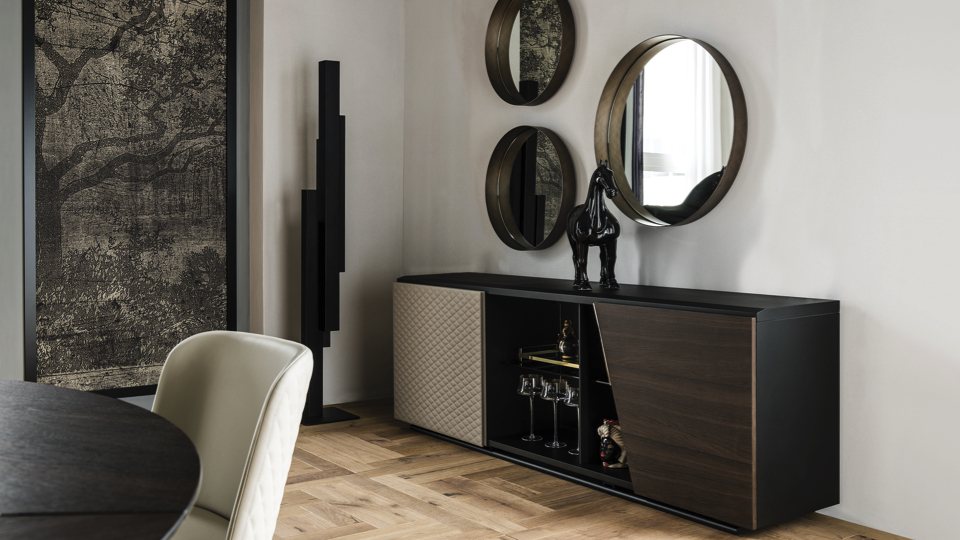
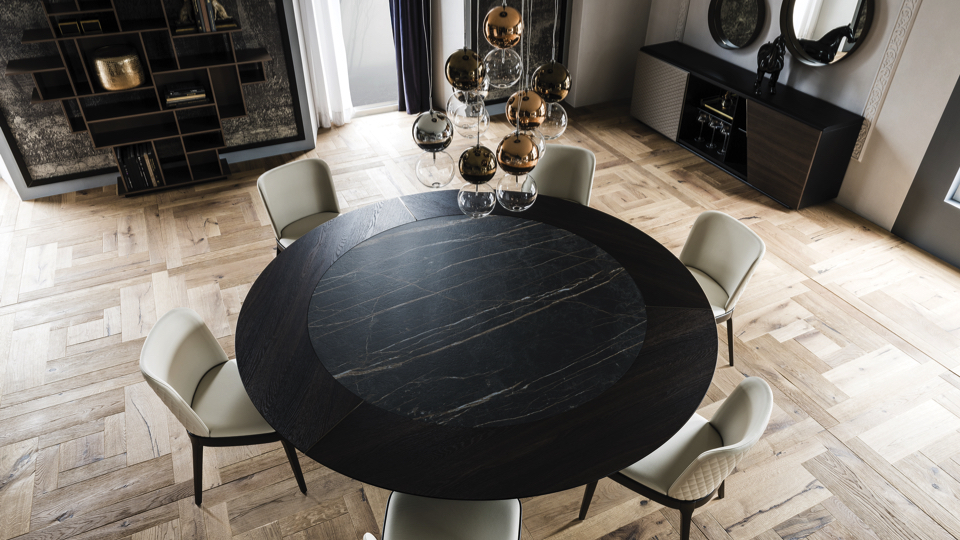
2018 was by far the most visited edition of Salone del Milano. From the bustling Furiosalone halls through to the glamorous Palazzos, the exponential spread of design across the city revealed Milan in its best light. With hundreds of our brands putting their most fashionable foot forward, we look forward to welcoming these novelties into our showroom very soon.










